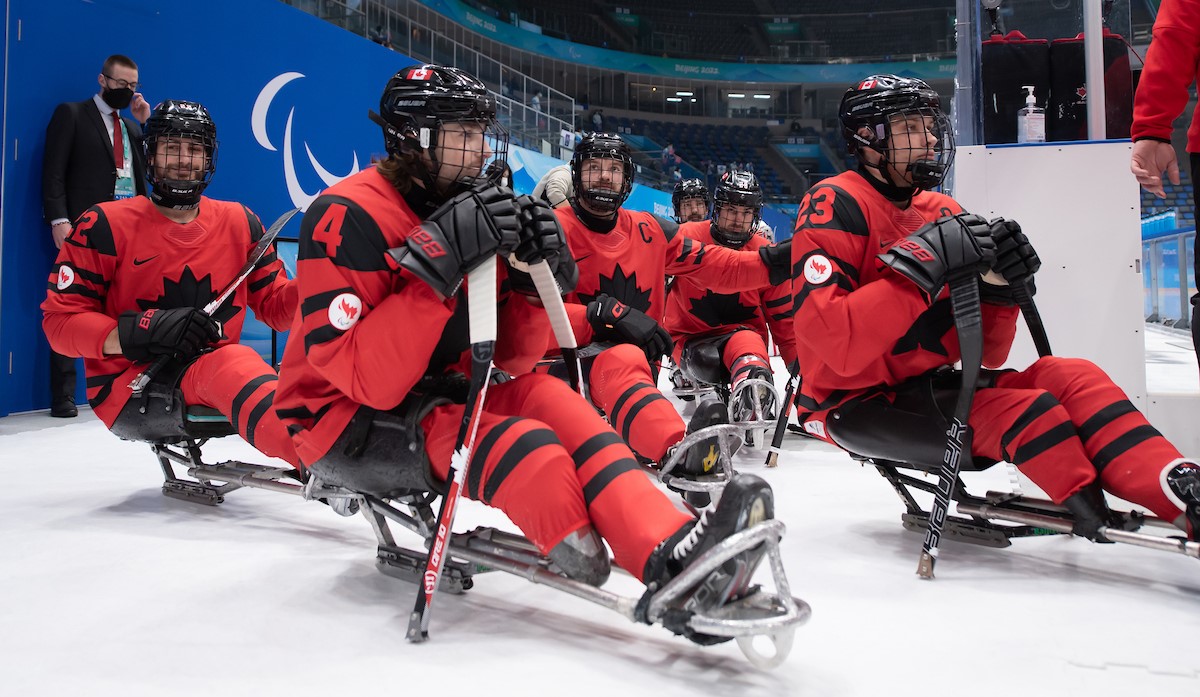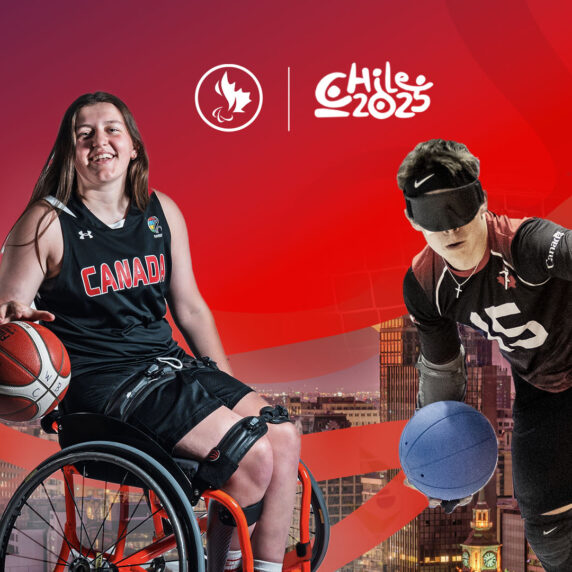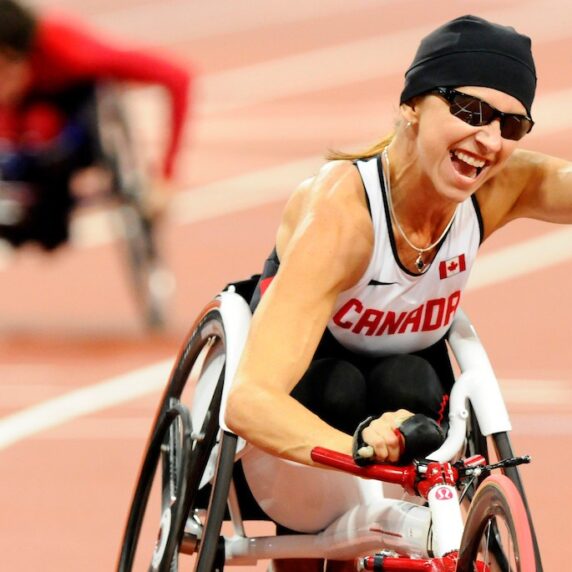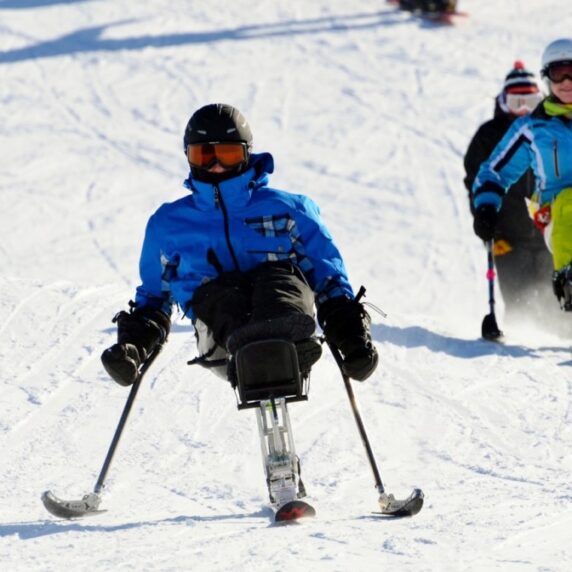All about Para ice hockey: Another exciting Paralympic tournament ahead in March
Get ready for Milano Cortina 2026 with a primer on the Para version of Canada’s most popular sport

Para ice hockey joined the Paralympic Games in 1994. Back then it was called sledge hockey but in 2016 the International Paralympic Committee changed the sport’s name to Para ice hockey.
With hockey being Canada’s most popular sport, the country has been a trailblazer in its development of the Para version at both the national and international level, long before it was included in the Paralympic Games.
Some of the great names in Para ice hockey in this country include Billy Bridges, Canada’s all-time leading scorer, leader extraordinaire Todd Nicholson, Vancouver 2010 MVP Brad Bowden, and many more. The tradition continues today with players like Greg Westlake, Tyler McGregor, and Tyrone Henry.
With less than six months to go until the Milano Cortina 2026 Paralympic Winter Games, get ready to cheer on the Canadian Paralympic Team by learning all about this thrilling and popular sport, below.
PARALYMPIC ORIGINS
Contrary to popular belief, Para ice hockey was not invented in Canada. It was concocted in the early 1960s by two individuals at a rehabilitation centre in Stockholm, Sweden, who wanted to find an adapted way to play hockey.
The first competitions weren’t held until 1969 as Stockholm formed a five-team league. During the 1970s, teams from Sweden and Norway played once or twice a year. Several other countries began to establish teams, including Great Britain (1981), Canada (1982), USA (1990), Estonia, and Japan (1993).
Canada actually first witnessed the sport in 1979, when Dick Loiselle, a former director of the 1976 Toronto Olympiad, brought back a sled from Europe, given to him by Rolf Johansson, a Paralympic gold medallist in wheelchair track and field and one of the inventors of Para ice hockey.
In 1993, Sledge Hockey of Canada was founded and designated as a national sport organization by the federal government in order to oversee the sport. It then became fully integrated into Hockey Canada in 2004. In 2006, Canada won the gold medal at the Torino Games and has continued to remain a superpower ever since.
The sport made its Paralympic Winter Games debut in 1994 in Lillehammer, Norway where Sweden won the gold medal with a 1-0 overtime victory over the host nation. Canada took home the bronze.
Since 2010, Para ice hockey is officially a mixed gender event but only three women have competed at the Games. However, the sport does have a strong presence for women and this past August the inaugural women’s Para ice hockey world championships was held in Slovakia. The U.S. beat Canada in the gold medal game.
International tournaments for the women have been contested since at least 2014 and there is a strong campaign underway to get women’s Para ice hockey included in future Paralympic Winter Games.
RULES AND EQUIPMENT
Instead of skates, players use double-blade sledges that allow the puck to pass beneath. Players use two sticks, which have a spike-end for pushing and a blade-end for shooting.
To participate in IPC competitions and sanctioned events (i.e. Paralympic Winter Games), athletes must have an impairment of permanent nature in the lower part of the body of such a degree that it makes stand-up skating, and consequently ice hockey playing, impossible.
This includes players with amputation, spinal cord injury, joint immobility, cerebral palsy and leg shortening.
As for rules of the game, it’s almost the same as stand-up hockey. A couple of exceptions are the three periods are 15 minutes each rather than 20. You can also get a penalty for teeing – when a player uses their stick in a “T” formation to impede an opponent’s sled.
CANADA’S HISTORY IN THE SPORT
There have been eight Para ice hockey Paralympic Games tournaments and Canada has reached the podium in six of them.
Canada defeated Great Britain 2-0 to win the bronze medal at the 1994 Games where the sport made its official Paralympic debut. That was followed by a silver in 1998 at the Nagano Games.
After a fourth in 2002, Canada roared back for the gold in 2006 as it beat Norway 3-0 in the final. Billy Bridges led the tournament in scoring with 18 points (11 goals and seven assists) while Brad Bowden was third with six goals and seven assists. Goaltender Paul Rosen led the tournament with a 0.92 goals against average.
It’s at Vancouver 2010 that the U.S. began its dominance in the sport, defeating Japan 2-0 in the final. The Americans won the next three gold including Beijing 2022. Despite a fourth in Vancouver, Canada delivered some great performances with Bowden named the tournament MVP and Greg Westlake leading all scorers with 11 points (seven goals and four assists).
Canada returned to the podium with bronze in 2014 with Adam Dixon and Anthony Gale 1-2 in scoring, followed by silver at the next two Games. At PyeongChang 2018, Dixon was named the top defenceman while in 2022 Bridges and Tyler McGregor were named to the tournament all-star team.
In Paralympic Games history, Canada and the U.S. lead the medal table with six medals apiece. Canada is the only country to have participated at all eight Paralympic Winter Games tournaments.
LOOKING AHEAD AT MILANO CORTINA
At the Milano Cortina 2026 Paralympic Winter Games, Para ice hockey will take place in Milano at the newly-built Milano Santagiulia Ice Hockey Arena.
The preliminary tournament will run from March 7-10, with the semifinals March 13, and medal matches on the final day of the Games on March 15.
Canada and the U.S. are highly favoured to clash again in the final. Since Beijing, the Americans won the world titles in 2023 and 2025, however the Canadians scored a big upset in 2024 beating their rivals in the final.
In the last four years, both Czechia and China have vastly improved and are providing stiff competition to the Americans and Canadians. The Czechs have won bronze at the last three worlds beating China by one goal each time.
Canada is expected to ice an experienced team with players like Westlake, Dixon, defenceman Tyrone Henry and goaltender Corbin Watson in the mix. Westlake, Canada’s second all time leading scorer retired after Beijing but returned in late 2025 after serving as an assistant coach with the team.
Then there are young established players like team captain McGregor, Liam Hickey, James Dunn, Rob Armstrong and Zach Lavin, with emerging stars like scorer Vincent Boily also set to inject even more power into the team.



"*" indicates required fields
"*" indicates required fields